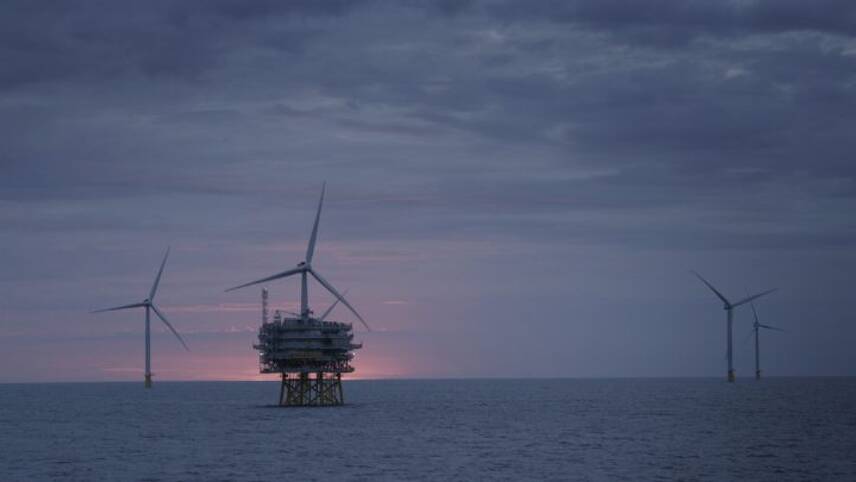Register for free and continue reading
Join our growing army of changemakers and get unlimited access to our premium content

Pictured: Norfolk's Race Bank wind farm was commissioned last year and is capable of generating 573MW of renewable energy
Published today (15 May), the latest edition of consultancy EY’s bi-annual Renewable Energy Country Attractiveness Index (RECAI) ranks 40 countries on how attractive their renewable energy investment and deployment opportunities are to investors of all sizes across the globe.
The UK has maintained its previous (November 2018) position at eighth in the ranking, with EY citing the Government’s recently unveiled Offshore Wind Sector Deal as a key move for supporting long-term investments.
Published in March by the Department for Business, Energy and Industrial Strategy (BEIS), the policy framework saw key industry players agree to collectively invest £250m over the next 11 years in exchange for participation in £557m of state subsidies. It additionally commits the offshore wind sector to boost annual exports fivefold by 2030, to reach £2.6bn.
While critics such as Greenpeace have argued that the Sector Deal is not ambitious enough to help deliver a net-zero carbon power sector by 2050, EY’s research has found that it has given investors more long-term certainty – particularly in light of the Government’s decision to lock onshore wind out of the Contracts for Difference (CfD) framework in 2015, which has slowed investment in onshore projects. Indeed, RenewableUK estimates that just 598MW of onshore wind capacity was installed across the UK during 2018, down from 2.7GW in 2017.
EY also believes that that the publication of the Offshore Wind Sector Deal helped to “buoy” the UK’s position in the RECAI table, amid uncertainties caused by Brexit and compounded in the hydropower sector by the Government’s decision not to back Swansea’s pioneering tidal lagoon. It did so by claiming that it would cost at least £31.5bn less to provide the same level of generation through offshore wind.
“While the Offshore Wind Deal is extremely positive news for the UK renewables sector and will help to attract significant investment over the coming years, the announcement regrettably follows the withdrawal of support for onshore renewables in 2016 that has slowed UK sector growth,” EY’s chief RECAI editor and leader for global power and utilities corporate finance Ben Warren said.
The bigger picture
Elsewhere in the RECAI index, China and the US retained their respective positions as first and second, in spite of the recent introduction of a 30% tariff on solar panel imports by the US Government.
EY cited the growing debate around a Green New Deal for the US as one of the key draws for investors, along with the nation’s substantial pipeline of 12GW of solar capacity, due to be added by the end of 2019, and a rising corporate interest in large-scale Power Purchase Agreements (PPAs). Bloomberg New Energy Finance (BNEF) estimates that a total of 8.5GW of clean energy was bought by US-based companies last year – 2.6GW of which was purchased by Facebook.
Third place was taken by France, which moved up two places on the previous ranking after the European Commission approved four large-scale demonstration projects. France’s position was also boosted by the national government’s decision to double its six-monthly onshore wind tenders from 500MW to 1,000MW. The top five is rounded off by India (fourth, down from third) and Australia (fifth, up from sixth).
The biggest climber was South Korea, which ranked as 24th in the new edition, up from 31st sixth months ago. EY attributes this move to the nation’s recently unveiled plans to build one of the largest floating renewable clusters in the word. It will consist of a 3GW solar farm and a 1GW wind farm and will be built off the west coast.
“As renewable generation continues to become more and more affordable; increased levels of penetration are beyond doubt,” EY’s Warren concluded.
“It is perhaps the integration of renewables into the wider energy ecosystem, the sector’s contribution to the emerging low carbon e-mobility market and the integration with storage technology that will ultimately define the future for renewables.”
Sarah George


Please login or Register to leave a comment.